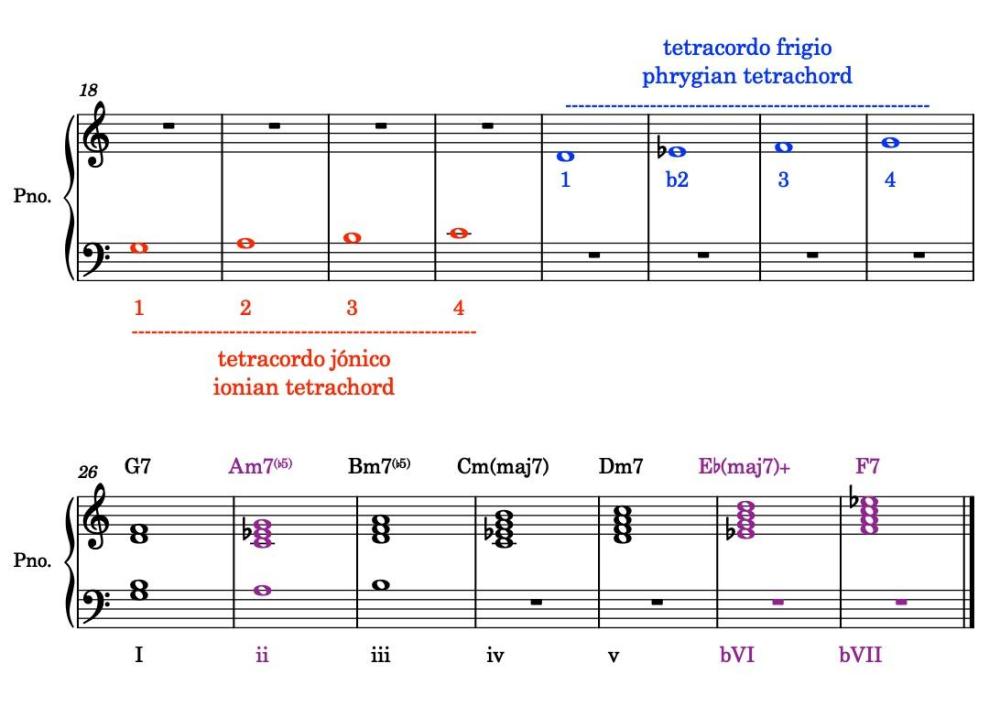Leaderboard
Popular Content
Showing content with the highest reputation on 05/23/2023 in all areas
-
Hello! I don't post here much anymore, but I'm an older "Old Timer" from the early days of this community. I compose mostly in Classical style of the late 18th-early 19th Centuries. I've been extremely busy writing all kinds of stuff, but here is one of the best examples of my recent output, my Symphony No. 9 in C. This work was premiered by the Delano Chamber Orchestra, Wichita, Kansas, under the direction of Dr. Wesley DeSpain on February 5, 2023. I may post a link to the live performance once I figure out how to edit it down. In the meantime, here is a link to a YouTube scrolling score video with high quality electronic rendering. Details on this work: Composed: August 29, 2019 - July 22, 2021 at Austin. Scoring: Full Classical-period orchestra - 2 Flutes, 2 Oboes, 2 Clarinets in B-flat, 2 Bassoons, 2 Horns (in C and G), 2 Trumpets in C, Timpani, Strings. Style: Classical, ca. 1790-1800. Duration: 33:30. I. Allegro maestoso (00:00) II. Andante sostenuto (08:00) III. Menuetto: Allegro brillante (16:25) IV. Vivace (22:55) - Electronic Rendering by Finale 26 music notation software "Human Playback" with NotePerformer 3 artificial intelligence assisted interpretation. I hope you enjoy, and let me know what you think. Incidentally, the structural repeat in the last movement is optional, and was omitted at the premiere.1 point
-
I've been composing for roughly two years now, and I currently consider this one of my better compositions by far. It was inspired partly by the music of Joe Hisaishi and Studio Ghibli, and I was planning on writing something that would fit nicely in an OST or something of that nature. Fortunately (or unfortunately, depending on how much you might enjoy the piece), the music chose itself a different route to take, so here we are. MuseScore's available sound packs are obviously leagues ahead of their competition, but they suffer from a lot of inevitable pitfalls in terms of phrasing, tempo, and so on. I've been hoping to get this performed somewhere, but haven't found the opportunity to do that lol This is the first time I've uploaded my music on the internet, and I hope you may give my music a listen to and tell me what you think! Please be nice in the comments, would appreciate that 🙂 -1 point
-
Thank you for the lovely words, @Henry Ng Tsz Kiu. They've been very motivating indeed! I never knew about how differently one's interpretation could vary so greatly from my own, and I'm honestly flattered! I certainly never thought to interpret my work that way 😅 I'll keep writing music and I hope to keep posting them to this forum. Looking forward to it! 💪1 point
-
Music has endless ways to explore. Some time ago I spent a lot of effort trying to figure out how to use the scales and turn them into "stand-alone" systems. Here is an example where I form an Ionian-Phrygian scale, where I look for the important tones, and the cadential chords. Everything is much better explained in my blog (in English and Spanish): https://komptools.blogspot.com/2023/05/escala-jonico-frigia-ionian-phrygian.html1 point
-
Hello, thank you for your reply. There are several issues to address.... First of all, in any musical system, from the beginning of music to contemporary, we need some cadential mechanism. Something that tells us that we reach the moment of rest. In tonal music it is very clear as you say, and it is based on the V-I harmony and the conduction of sensitive voices to tonic. Apart from other ways of creating cadences, in modal music we have to look for harmonies that make us hear that mode as such. And the way is to use chords that contain the characteristic note. In the traditional modes (Ionian, Dorian, etc,,,) we have clear characteristic notes. But when you design a different mode, you have to look for it, sometimes there is more than one. Somehow you try to emphasize what makes that mode unique. Secondly, the idea that modal music is linear and favors melody and all this is true, but applicable to a period (quite long 1000 years) before tonal music. But already in romanticism and after, modal music has taken other paths and the example we have in jazz where sometimes it is more rhythmic than melodic. Finally, it is true that the result of joining two tetrachords can result in a scale that already has a specific name. This is frequent. It is another way of arriving at the mode scale. It is true that, in this case, the scale coincides with the melodic minor scale in C. But only the tones coincide, and rearranged. It has nothing to do really because the base note is G. The melodic minor scale implies the use of the dominant-tonic axis, while this Ionian-phrygian scale does not. The point is that just by combining the basic tetrachords you get lots of scales.1 point
-
Hello @Awsumerguy, Welcome to the forum! This is for sure a refreshing and funny piece. A pastarol opening with a farcical middle section and they both work really well and are enjoyable. I love the opening cello melody as for me it really imitates the cow mooing. The opening really creates a pastarol feeling with those drone chords. The woodwinds are great as well and they certainly remind me of the recorder melody. (Like those in the 3rd movement of Berlioz"s Symphonie Fantastique?) In the middle section it becomes more rhythmic or less traditional with many of the extended technique used, for example the snap pizz and col legno for the strings, overblow harmonics for the oboe. The changing meter and naughty harmonies which signify how crazy the country dance is, with the punching piano creating rhythmic complexity. All those things use here match with the scenes you want to depict but not for the sake of using them only. The description is funny too. The "musican gather themselves" section is very descrpitve with the cello pizz. goes in first and then piano acts as the conductor of the ensemble. In the end the rustic peace is achieved once more. This is a real enjoyable and joyful piece. Great job! Make sure to add some slurs for strings and woodwinds to indicate the bowing,tonguing and breathing! I don't know if in some passages it will be difficult for the flute to play with all those rapid 32th notes in a quick tempo. The ending 4/2 time signature is unnecessary for me. You can just have two bars of 4/4 there for me. Also the double bass can have more melodic significance here, but this is personal. Thanks for joining us and providing us this wonderful piece! Make sure to stay in the forum and take a look in other members' pieces as well! Henry1 point
-
Hi @Luis Hernández, This is quite interesting. For me what differ the tonal practice with the modal practice is that tonal practice has hierarchy of the chords and there are clear functions of them, while in modal practice it will be less hierarchical and the counterpoint and voice leading are the only principle of music, that's why composers will try to have the voices move as smooth as possible, and given the singers at that time are much less professional now the rules tend to be stricter in order to help them sing correctly. I see in your blog you have said "Therefore, we have a base chord, or tonic chord. Cadential chords (which replace dominant chords) in modal systems are at short distances from the tonic chord. A semitone, a tone, a second or a third, but not a fifth away. Moreover, the cadential chord must contain the characteristic tone (b6). So, we can use several chords as cadential: F7 (bVII), Ebmaj or Ebmaj7+ (bVI), and perhaps Am7b5(ii). The remaining chords can also be used, at the composer's discretion.". Will cadential functions important in the creative scales? In tonal period V chord is the dominant since 1) it's stable in itself (in minor key it's changed to a major V), 2) The fifth is closest note to the tonic as in the overtione series, 3) The use of fifth lower is already commonly used in modal music, like those tuba notes and keys (e.g. hypodorian, hypolydian). If 1) other chords are chosen as the cadential chord, it maybe harder to give audience something stable to be grammatically important. It will have the feeling to be forced upon by the composers to have those notes emphasized. 2) For me the definition of characteristic tone can be freely chosen. Like your key for example I can instead have it interpreted as an upward C melodic minor scale starting on G. Maybe for me the approach for having two tetrachords instead of an eight-note scale better. You can just decide the tones and semitones inside the tetrachords, as well as tone or semitones between tetrachords. For example if two 0134 set combined with a tone apart, it will be an octatonic scale, but even Stravinsky who is known to used octatonic scales doesn't necessary have those tetrachord in a tone apart, since sometimes he just has them a semitone apart. Thanks for sharing! That's real interesting. Henry1 point
-
until#shadowBox { background-color: rgb(0, 0, 0); /* Fallback color */ background-color: rgba(0, 0, 0, 0.2); /* Black w/opacity/see-through */ border: 3px solid; } .rainbow { text-align: center; text-decoration: underline; font-size: 20px; font-family: calibri; } .rainbow_text_animated { background: linear-gradient(to right, #1BD115, #54D115, #D1D115, #15D141, #1BD115); -webkit-background-clip: text; background-clip: text; color: transparent; animation: rainbow_animation 6s ease-in-out infinite; background-size: 400% 100%; } /* This is the important chunk */ @keyframes rainbow_animation { 0%,100% { background-position: 0 0; } 50% { background-position: 100% 0; } } Ladies and gentlemen, this time we are pleased to announce @Eickso's yearly big competition "Call for scores". Let's go straight to the point, the prizes given to the winners of this competition are really something! REQUIREMENTS: • Your works must have NOT been premiered more than 5 times. (If that's the case but you still want to participate, please contact with @Eickso) • You must submit 2 of your best representative works (score & audio) along a 500-word proposal* on why you are interested on this opportunity. They must NOT be anonymous. They do not need to be newly creations. • You must submit your works ONLY THROUGH THIS FORM. PRIZES: You will be hired to make a unique composition for the Möbius duo which will be premiered. For doing so, you will be given: • 1st winner: $500 • 2nd winner: $400 • 3rd winner: $300 ♫ Every winner will be given a product key for Finale v27 and Noteperformer 3. ♫ Every commissioned piece will be featured in George N. Gianopoulos' channel. ♫ More information: LINK ♫ Original post at YC: LINK Encouraging everyone to join. Almost no restrictions, a bunch of prizes... What else can you ask for? Many thanks to Evan and the team behind for hosting this competition and giving composers a very attractive opportunity! Footnotes: *From the official site: The proposal should cover an introduction of yourself, why this opportunity would be beneficial to you and your career, and any other information you find important. You may optionally include a small section regarding any specific ideas you have for a piece you would write for the Möbius Duo. This should be most focused on why this opportunity would be beneficial for you. We are looking for deserving composers who have not received the recognition they deserve, so this is really your chance on the application to sell yourself!1 point




